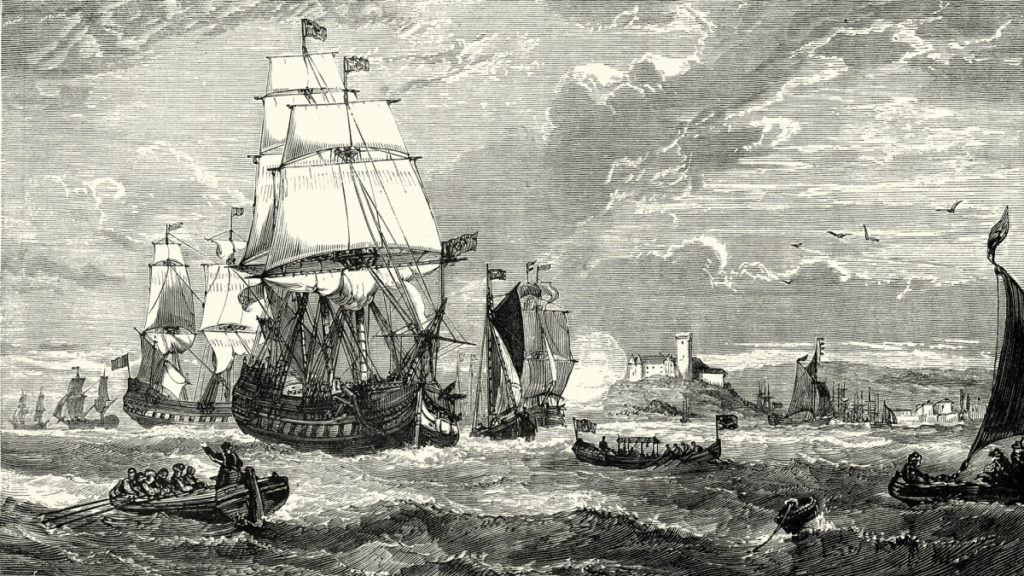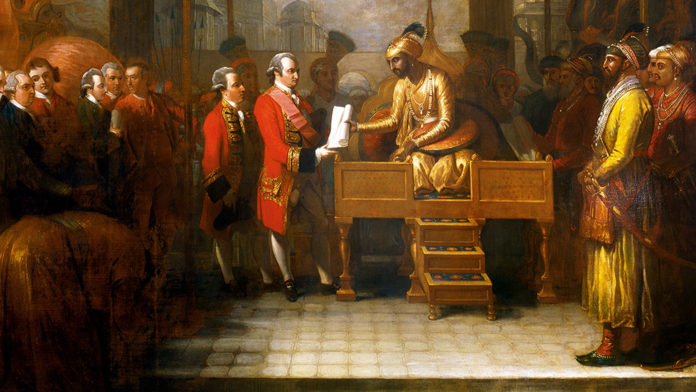“We travel not for trafficking alone.
By hotter winds our fiery hearts are fanned.
For lust of knowing what should not be known,
We take the Golden Road to Samarkand.”
James Elroy Flecker
Polskie gry kasynowe: Tradycja spotyka nowoczesność
Historia polskich gier kasynowych
Polska ma długą historię związaną z grami hazardowymi. Już od wieków Polacy uczestniczą w różnego rodzaju rozrywkach związanych z kasynami. Początki sięgają czasów, gdy gry kasynowe były dostępne tylko w tradycyjnych kasynach stacjonarnych.
Wraz z rozwojem technologii i pojawieniem się Internetu, gry kasynowe zaczęły przenosić się do przestrzeni wirtualnej. Dzięki temu polscy gracze mają obecnie dostęp do szerokiej gamy gier kasynowych online. Wystarczy wejść na stronę i można rozpocząć przygodę w wirtualnym kasynie.
Popularne polskie gry kasynowe
W Polsce istnieje wiele popularnych gier kasynowych, które cieszą się dużym zainteresowaniem wśród graczy. Oto kilka z nich:
- Poker – gra karciana, która wymaga strategii i umiejętności. W Polsce poker zyskał ogromną popularność i regularnie odbywają się turnieje pokerowe, zarówno online, jak i stacjonarne.
- Ruletka – klasyczna gra kasynowa, która polega na obstawianiu numeru, koloru lub kombinacji numerów na obracającym się kole. To jedna z najbardziej rozpoznawalnych i popularnych gier kasynowych na świecie.
- Blackjack – gra karciana, w której celem jest pokonać krupiera, zbliżając się do sumy punktów 21, ale nie przekraczając jej. Blackjack ma prostą zasady, ale oferuje wiele strategicznych możliwości.
Oczywiście, to tylko kilka przykładów. Polskie gry kasynowe są różnorodne i każdy gracz może znaleźć coś, co mu odpowiada. Warto wypróbować różne gry i odkryć swoje ulubione.
Nowoczesne polskie kasyna online
Wraz z rozwojem technologii, polskie kasyna online stają się coraz bardziej popularne. Dzięki nim gracze mają dostęp do szerokiej gamy gier kasynowych bez konieczności wychodzenia z domu. Wystarczy komputer lub smartfon i połączenie internetowe, aby cieszyć się ulubionymi grami kasynowymi.
Nowoczesne polskie kasyna online oferują nie tylko tradycyjne gry kasynowe, ale również innowacyjne rozwiązania, takie jak gry na żywo. Dzięki nim można zagrać w ulubione gry z prawdziwymi krupierami, którzy prowadzą grę na żywo za pośrednictwem strumieniowania wideo. To daje uczucie autentycznego kasyna nawet podczas gry online.
Warto również zauważyć, że polskie kasyna online są bezpieczne i legalne. Przestrzegają odpowiednich przepisów i posiadają wymagane licencje, co daje graczom pewność, że ich dane osobowe i finansowe są chronione.
Podsumowanie
Polskie gry kasynowe mają bogatą tradycję, która spotyka się z nowoczesnością w formie kasyn online. Dzięki nim polscy gracze mają dostęp do różnorodnych gier kasynowych, które można grać zarówno w tradycyjny sposób, jak i online. Wystarczy wejść na stronę i rozpocząć przygodę w świecie wirtualnych kasyn. Niezależnie od preferencji, każdy gracz może znaleźć coś dla siebie i cieszyć się emocjonującymi doświadczeniami hazardowymi.
Eighteenth century India and its neighboring regions were an exotic place for outsiders and not much was known about the geography and people of this large swath of land. An odd traveler or explorer published the details of his perilous journey among strange and alien land and people for the home audience. Arrival of the East India Company (EIC) for trade and later territorial expansion brought modern scientific methods of exploration and mapping that filled up the empty spaces on maps.
During military operations, officers collected localized information about the terrain, availability of supplies to support troops and animals and information about local population. However, this information was localized and limited to military operations at hand. Knowledge about land and people ruled by EIC rapidly expanded. Over the years, a small group of extraordinary British and native explorers contributed to sciences of geography and anthropology. This was an area where political, administrative, military and spying arts freely intermingled.
In eighteenth and nineteenth centuries, India’s frontiers were changing with territorial expansion of EIC. In these decades, frontiers moved from Oudh, Gangetic plains, Sindh and Punjab to Northwestern and Northeastern frontiers. In the context of defense of India, the area of British influence also expanded to Tibet, Chinese and Russian Turkistan and Afghanistan. The Royal Geographic Society (RGS) became the patron of the advancement of the field of geography on scientific grounds and published works of explorers of India and its neighborhood.
In 1800, three separate surveys were started in India: Revenue, Topographical and Trigonometrical (later named Great Trigonometrical Survey – GTS). In 1878, all three were amalgamated into a single “Survey of India”. James Rannell (1742-1830), William Lambton (1756-1823), George Everest (1790-1866), Thomas George Montgomerie (1830-1878), Henry Trotter, William Johnson, James Walker, Colonel Frederick Bailey (1882-1967), Sir Thomas Hungerford Holdich, Godwin-Austin, Captain Francis Younghusband and others were exceptional individuals, driven by a sense of adventure, exploration and duty. They were highly committed individuals willing to suffer extreme hardships in strange and unknown lands. They instilled the same spirit among their native assistants. Surveying in frontier areas was a dangerous task as locals correctly concluded that surveying was the steppingstone towards loss of their freedom. There was an Afghan saying that “First comes one Englishman for shikar (hunting), then come two to draw a map, and then comes an army to take your land. So, it is best to kill the first Englishman”.
A surveying school was established in Madras in 1794 for training of natives in surveying techniques. A number of Anglo-Indians were also recruited as sub-assistants. In the first quarter of nineteenth century, some natives who received English language education at Delhi College became qualified assistants to British military, civil and survey officials. The status of this new generation was higher than the ‘munshi’ who traditionally acted as clerk, scribe, translator and tutor of British superiors. The new title of ‘Persian Secretary’ elevated the social and financial status of the new generation and proficiency in English language was the single most important factor of this advancement. Two members of the first class of Delhi College became well known travelers and wrote their memoirs in English based on daily journals that they kept. Mohan Lal served with Alexander Burns and Shahamat Ali served with Resident of Ludhiana Agency, Lieutenant Colonel Claude Wade and later Resident of Malwa.
The father of Indian Geography James Rennell mapped EIC holdings of Bengal and Bihar in the later part of eighteenth century. Rennell acknowledged the contributions of his native surveyors. In 1770s, Gholam Mohammad surveyed the roads between Bengal and Deccan, Mirza Mughal Beg explored northwestern India and Sadanand surveyed Gujrat. This is the earliest written record of work of native surveyors.
McCartney mentioned his two native assistants Zaman Shah and Mahmood Shah who assisted him in mapping Afghanistan. Alexander Burns relied heavily on his secretary Mohan Lal and surveyor Muhammad Ali. Mirza Izzatullah Beg was from an influential family that had served Mughals. He became an authority on his own due to his unique background, intelligence, education, hard work and travels. He used rigorous methods of accuracy and left written record of his adventures. In 1812-13, he travelled from India to Tibet, Chinese Turkistan (Yarkand) and Central Asia. He served under Thomas Metcalf (helping in collecting intelligence in Multan and surrounding areas), Mountstuart Elphinstone (travelled with him to Kabul) and William Moorecraft (reconnaissance mission to Tibet, Chinese Turkistan & Bukhara). He rose to become key secretary of the Delhi Residency.
William Moorecraft in his trips to Nepal, Tibet and Central Asia had company of some exceptional natives including Ghulam Haider Khan and Pundit Harbalam. He also had assistance of two brothers – Bir Singh and Deb Singh. They were Bhotias: Indians of Tibetan descent. Another native Harkh Dev was assigned the task of survey and recorded distance by a measured pace. This technique was later to be refined and used by ‘pundits’ during survey of Tibet and Chinese Turkistan. Sarat Chandra Das was one of the famous pundits who was a Bengali scholar of Tibetan language and culture. In the last quarter of the eighteenth century, Nain Singh, Kalyan Singh and Kishen Singh surveyed Chinese Turkistan.
Arthur Conolly (6th Bengal Light Cavalry) in his travels to Tsarist Russia, Caucasus, Afghanistan and Baluchistan was accompanied by Syed Karamat Ali. Mirza Shuja served with Eldred Pottinger in Herat in 1837 and later conducted military survey around Peshawar, Baluchistan, large swaths of Afghanistan and Chinese Turkistan. He also performed sensitive intelligence gathering while teaching English to Amir Dost Mohammad Khan’s sons in Kabul.

Hayder Shah was from Peshawar and served as Havildar in Bengal Sappers and Miners. He along with another native explorer Ata Mohammad explored Dir, Swat, Chitral and Badakhshan. Later, he undertook another survey from Kabul to Bokhara. Naik Ghafoor Shah also of Sappers accompanied Hayder Shah on one of the journeys. In 1860, Mullah Abdul Majid was sent on a mission from Peshawar, crossing Pamir Mountain Range to Khanate of Khokand. In 1863, Abdul Hamid was sent on surveying mission of Chinese and Russian Turkistan.
A jeweler’s assistant Mohsin Hussain proved to be such an expert in calibrating and repairing complex and expensive survey equipment that when his cantankerous British superior Henry Barrow was discharged, Mohsin took over the task. Surveys generated huge amount of data that needed complex calculations. A team of ‘eight human computers’ processed this data. This team of Bengalis that included an exceptional gentleman Radhanath Sikdar earned the respect of the British. It was freely admitted that their mathematical genius would be ranked very high in Europe.
There was a saying that “in the east, nothing is ever forgotten, but little remembered with accuracy”. Native surveyors changed that tradition and added new European methods of keeping daily journals, written knowledge based on facts thus incorporating text-based knowledge to the art of oral tradition and memory. Later generations of educated natives of Survey of India continued the traditions of devotion to duty and work ethics and setting high standards of proficiency and hard life in extreme climatic conditions. They also put a high premium on the value of education and made education of their children a first priority. Children of ‘servants of the map’ proudly served in the armed forces and civil services of the successor states the Raj.
“Frontiers are the razor’s edge on which suspended the issue of war or peace and the life of the nations.” Lord Curzon
Notes:
Edney, Matthew, Mapping an Empire: The Geographical Construction of British India, 1765-1843 (Chicago: University of Chicago Press, 1997)
Meyer, Karl & Shareen Brysac. Tournament of Shadows: The Great Game and the Race for Empire in Central Asia (Washington D.C.: Counterpoint, 1999)
Dean, Riaz. Mapping The Great Game: Explorers, Spies & maps in Nineteenth century Asia (Oxford: Caseate Publishers, 2019)
Hopkirk, Peter. The Great Game: The Struggle for Empire in Central Asia (New York: Kodansha America Inc, 1994)
Ward, Michael. The Survey of India and the Pundits. The Alpine Journal, (Vol 103, 1998), pp.59-79 Mathur, Tapsi. How Professional Became Natives: Geography and Trans-Frontier Exploration in Colonial India. Ph. D Thesis. University of Michigan, 2018




